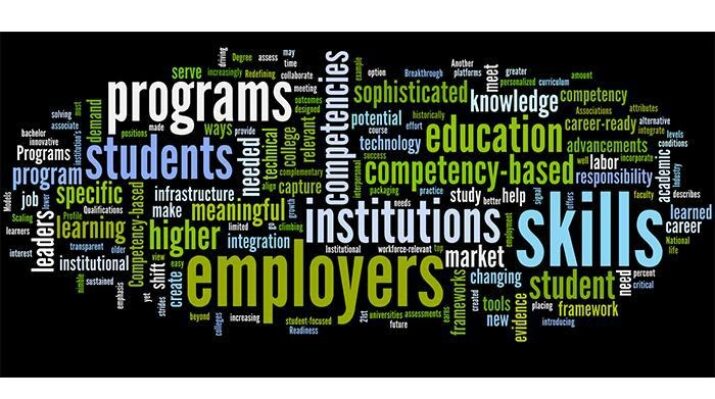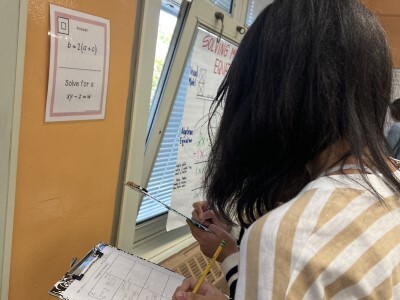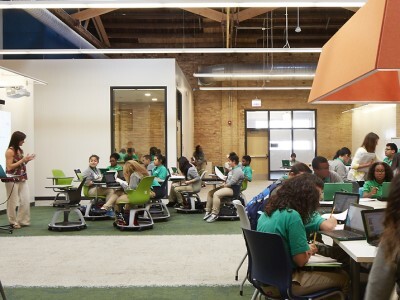Your Invitation to Design and Improve Competency-Based Learning Models
Topics

We’ve all had the experience of truly purposeful, authentic learning and know how valuable it is. Educators are taking the best of what we know about learning, student support, effective instruction, and interpersonal skill-building to completely reimagine schools so that students experience that kind of purposeful learning all day, every day.
We don’t issue a driver’s license just because a person read the manual. How, then, might we award school credit based on performance not seat time?
A competency model awards credit based on demonstration of skills and knowledge instead of based on seat time. It’s one of the seven defining design principles of a breakthrough school. If you’re a prospective Wave IV applicant, no doubt you’re giving some thought to how you will enable students to show what they know and can do. You might also be thinking about how you’ll evaluate your approach, nurture a performance-based mindset as part of the learning culture, and communicate its value in- and outside the school.
I love this real world example from Nicholas Donohue of the Nellie Mae Foundation: We don’t issue a driver’s license just because a person read the manual; or, even after they’ve passed an exam indicating they know the laws, road signs and traffic signals. We ask them to show they can parallel-park, keep a safe distance, and apply the rules of road in practice. Still, designing good competencies within a system of learning is easier said than done—and measuring college readiness represents a more complex challenge than measuring safe driving skills.
To our collective benefit, good work is being done to address this challenge in schools and statehouses across the country— where lots of smart people are starting to figure it out. And, since this is still an emergent area, a menu of approaches exists. Here’s a sampling:
- USC Hybrid High and Nolan Elementary/Middle of the Education Achievement Authority have competencies built into their courses and within graded-level progressions as outlined in state standards. Each student learns at her own pace and advances to the next level upon showing mastery of earlier material. Often, this is achieved though digital knowledge and skill assessments that are embedded in a unit, module or online platform.
- Cornerstone Charter Health High School eliminated age-based grade levels and even A-F grading altogether. Each student progresses along a continuum of mastery—from novice to expert—demonstrating the skills necessary before advancing to the next level.
- At Da Vinci Schools, project based learning is so much a part of the fabric and culture of the learning, that students regularly present to peers, outside visitors and community members. Real world problems and real community audiences help ensure both relevance and accountability in the learning. Students are asked to explain their learning insights, the processes they employed, and to interpret the significance of their learning sometimes from multiple perspectives.
- Non-NGLC schools such as Metro and MC2 STEM High School set a common high-level of expectation. Each student is expected to reach a mastery level of 90 percent. Students take as much time as needed and work continuously—demonstrating as yet still unmet skills and knowledge in new content areas throughout the year—until they reach mastery.
This diversity of conceptual approaches to competency-based learning also relies on a variety of technology tools. Embedded assessments and analytics available through Apex Learning can be used to oversee student’s self-paced progression. Platform analytics allow teachers to review the amount of time and effort students expend and the types of questions students find most difficult. Platforms in the form of data dashboards are used by students to access feedback at any time (24/7) and to play a role in managing their own progress. Digital portfolio systems such as Show Evidence, enable students to upload and store sample work to illustrate their learning of a content or skill standard. Students and/or teachers may employ digital portfolio assessments to demonstrate individual growth and improvement over time, and/or to showcase a student’s best work.
Technology is a powerful enabler of competency-based learning. Today’s educator benefits from an expanded array of choices in and applications of digital tools—from online games and simulations to portfolios, from analytics and integrated project management tools to badges, and from creative digital media to peer-supported and professional communities. It is easier than ever before for teachers and students to document, curate, and share student growth and achievement.
The variety of competency-based learning approaches now available is promising, and yet no one has it all figured out. Wave IV is intended to be an invitation to improve upon innovative models of today and to help us “level up” (to use an old gaming phrase). Wave IV invites you to bring your creativity and expertise to this challenge by asking, “where will your breakthrough school model take us?”
To learn more about competency in theory and practice: CompetencyWorks.
To read through the profiles of NGLC funded breakthrough schools: Breakthrough Model School Profiles




